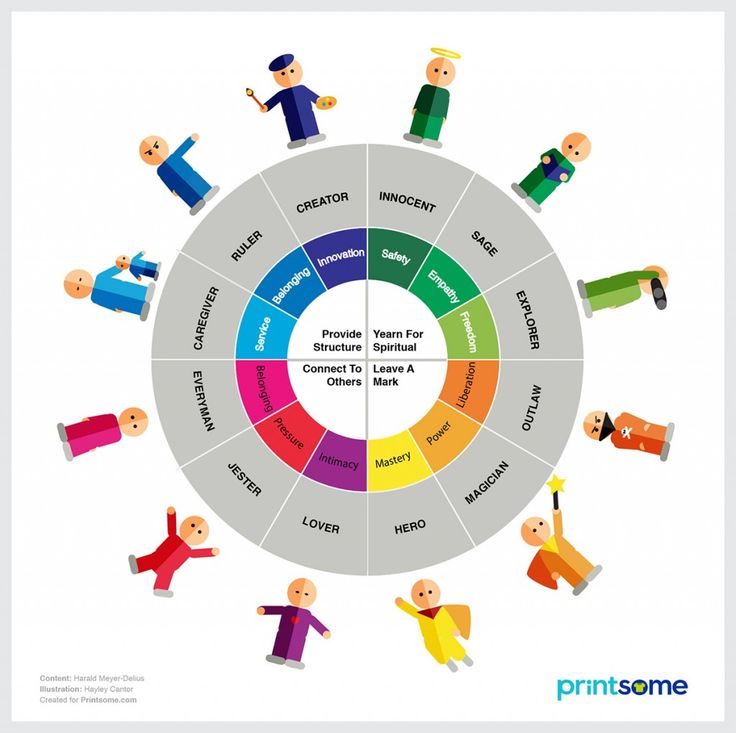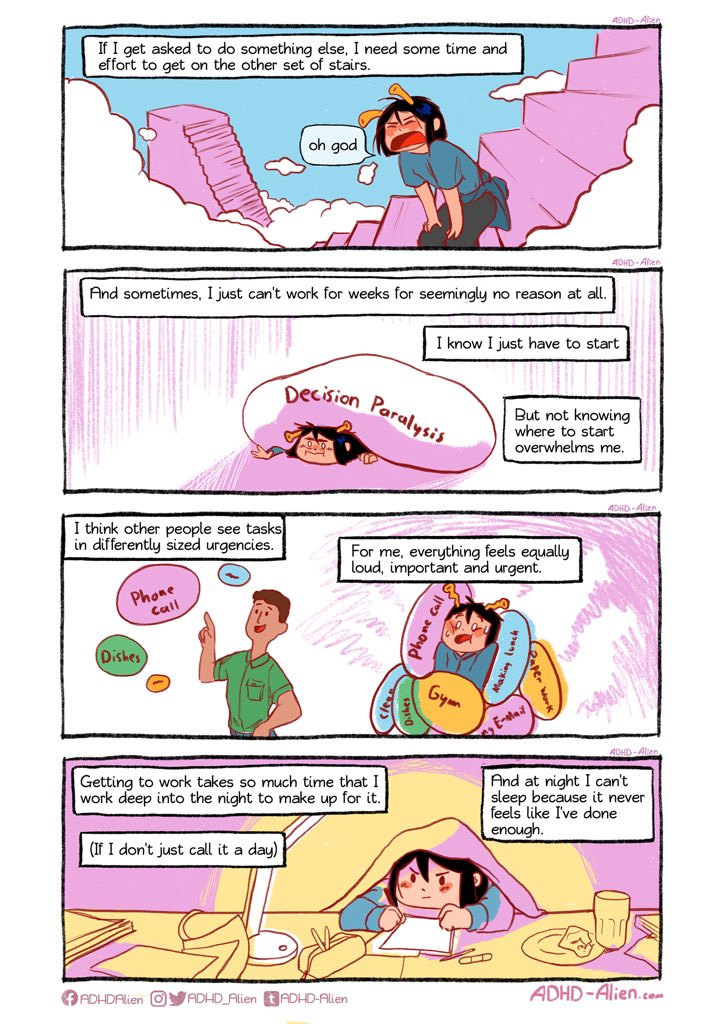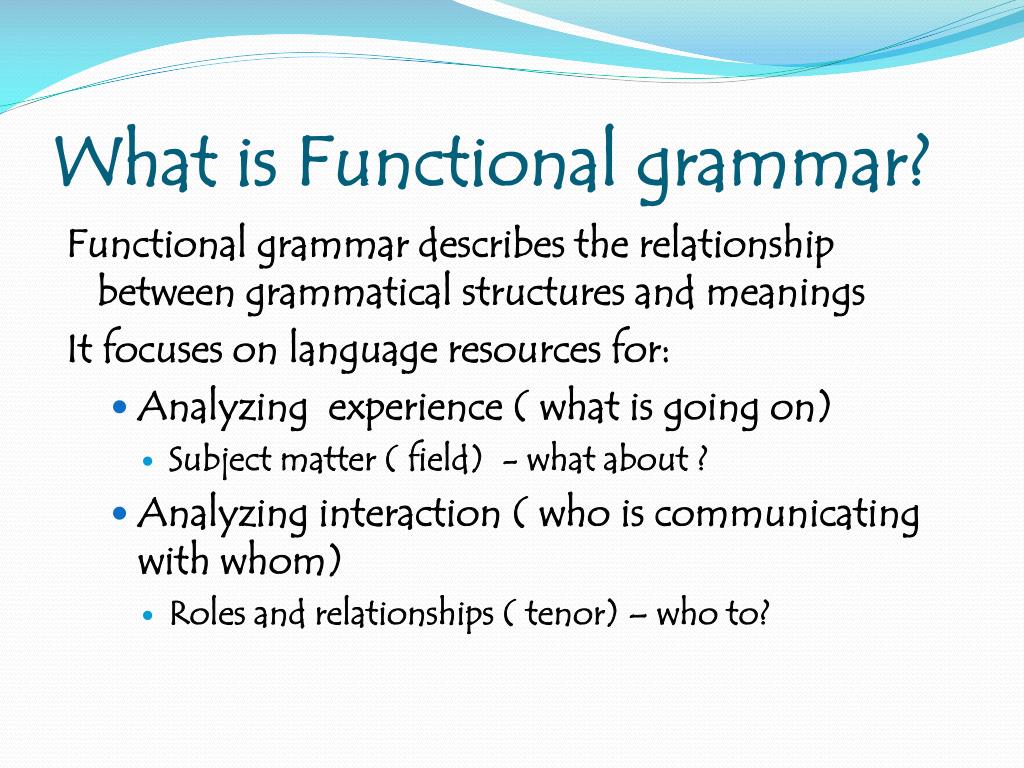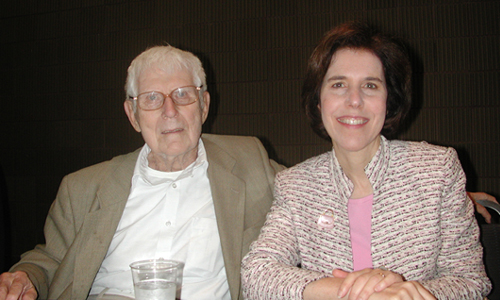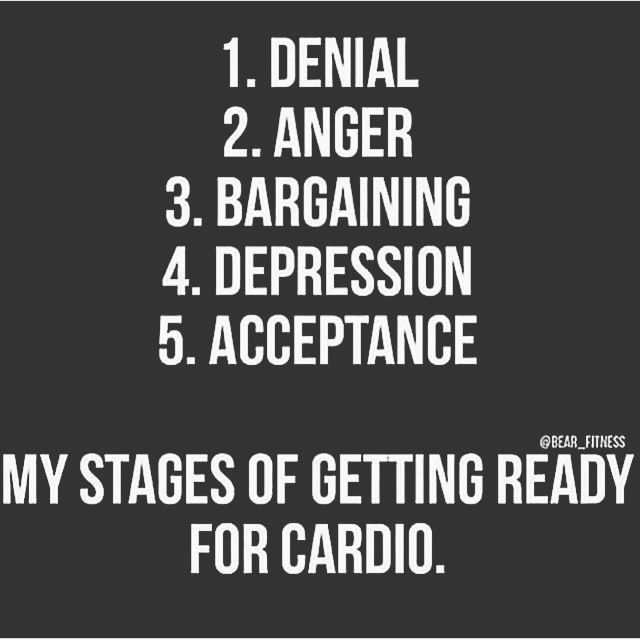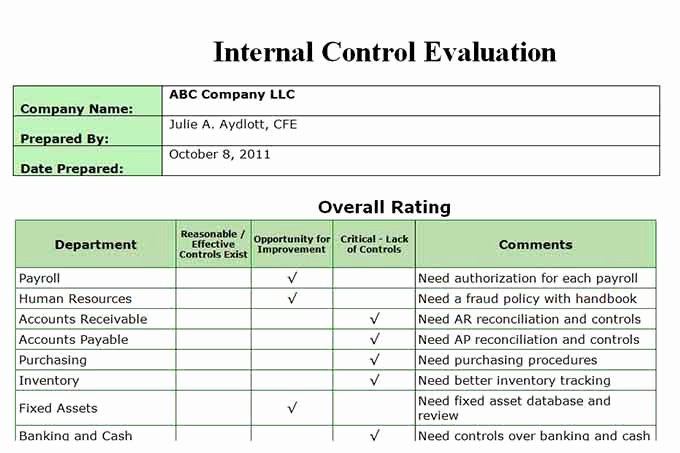Is it adhd or bipolar disorder
Guide to Distinguishing Lookalike Conditions
ADHD’s high rates of comorbidity with other neurobiological disorders are well researched and documented. The majority of people with attention deficit disorder (ADHD or ADD) also have another condition or learning disability. Yet accurate diagnosis rates for co-occurring or stand-alone conditions like obsessive-compulsive disorder, anxiety, and even autism remain discouraging at best. The rates of misdiagnosis and delayed diagnosis are particularly high among patients with bipolar symptoms; they are astronomical for patients with bipolar disorder plus ADHD.
“What Is Causing My Racing Thoughts?” Bipolar Disorder and ADHD
Bipolar disorder often co-occurs with ADHD, with comorbidity figures as high as 20%. 1 Recent research also suggests that about 1 in 13 patients with ADHD has comorbid BD, and up to 1 in 6 patients with BD has comorbid ADHD2. This comorbidity rate is significant enough to justify dual evaluations for virtually every patient, yet bipolar disorder is often missed or misdiagnosed in patients for the following reason:
- Several depressive and manic symptoms of bipolar disorder and ADHD symptoms resemble each other in both children and adults.
- ADHD is far more common than bipolar disorder. (About 9% of all children in the U.S. have symptoms of ADHD3; many of those children grow up to become adults with ADHD. Bipolar disorder, in contrast, impacts just 2.4 percent of the population.4) As such, physicians are more likely to recognize and screen for ADHD.
- Once considered an adult condition, bipolar disorder does begin in childhood but its symptoms are difficult to diagnose because they so closely mimic other childhood-onset conditions like ADHD and because they are often dismissed as signs of puberty.
[Self-Test: Bipolar Disorder in Adults]
Whatever the reasons, undiagnosed and/or untreated bipolar disorder can have deadly consequences. One in five people with the condition will commit suicide. Studies show that at least one in three5, or even one in two6 will attempt it — that is 15 times greater than the suicide rate in the general population. Suicide occurs often during manic phases, when patients are more impulsive and fearful of falling into another depressive cycle. People with bipolar disorder have a reduced life expectancy of about 10 years. Among undiagnosed and untreated bipolar patients, the rates of suicide — as well as alcohol and drug abuse, unprotected sex, and other risky behaviors — is substantially higher.
Suicide occurs often during manic phases, when patients are more impulsive and fearful of falling into another depressive cycle. People with bipolar disorder have a reduced life expectancy of about 10 years. Among undiagnosed and untreated bipolar patients, the rates of suicide — as well as alcohol and drug abuse, unprotected sex, and other risky behaviors — is substantially higher.
To stop this national health crisis, we must first better understand bipolar disorder and how it manifests in different settings at different ages in both its manic and depressive forms. We must also understand how it mimics and overlaps with other neurobiological conditions, and what treatment options exist for patients who suffer from bipolar alone or in combination with a disorder like ADHD.
The biggest obstacle to a good prognosis is an adequate diagnosis. Once you have an adequate diagnosis that is appropriate and you get the right interventions, you can live a wonderful healthy, thriving life with bipolar disorder or bipolar disorder and ADHD.
What is Bipolar Disorder?
Bipolar disorder is a serious mental illness that is characterized by extreme mood swings, abrupt changes in energy levels, and distorted decision making. In most cases, it develops in the late teens or early adulthood — though more and more experts now accept the existence of pediatric bipolar disorder. Bipolar disorder affects men and women at virtually equal rates, and the disorder is found among patients of all races, social classes, and ethnic groups.
[Self-Test: Does My Child Have Bipolar Disorder?]
Bipolar disorder is characterized by high, euphoric, or irritable periods called mania and low periods of depression. The mania stage is sometimes mistaken for hyperactivity and the low states manifest themselves as inattention and lack of motivation, which are common in individuals with ADHD.
Depressive Symptoms of Bipolar Disorder
The depressive symptoms of bipolar disorder include:
- Very low mood state
- A loss of interest in things that previously gave pleasure
- Dysregulation of appetite (either increase or decrease)
- Significant weight loss or gain
- Change in sleeping habits (sleeping much more than normal or sleeping too little)
- Altered physical agitation rate (slowing down or becoming more anxious)
- Feelings of fatigue, worthlessness, or inappropriate guilt
- Difficulty concentrating
- Recurrent thoughts of death or suicide
How Depressive Symptoms Resemble ADHD
The ADHD brain produces an insufficient amount of dopamine, the neurotransmitter that helps control to brain’s reward and pleasure centers. As such, it naturally craves more dopamine, which sugar and carbohydrates deliver in spades. Feeding these cravings may result in the appetite changes, weight gain, and sleep problems described above. In addition, people with ADHD report frequent sleep disturbances and problems falling asleep due to a racing brain. Inattentiveness and difficulty concentrating may cause fatigue, especially among students and full-time employees working long days. Distractibility and poor focus can cause people with ADHD to quickly lose interest in activities or objects that once gave them pleasure as well.
As such, it naturally craves more dopamine, which sugar and carbohydrates deliver in spades. Feeding these cravings may result in the appetite changes, weight gain, and sleep problems described above. In addition, people with ADHD report frequent sleep disturbances and problems falling asleep due to a racing brain. Inattentiveness and difficulty concentrating may cause fatigue, especially among students and full-time employees working long days. Distractibility and poor focus can cause people with ADHD to quickly lose interest in activities or objects that once gave them pleasure as well.
The principle difference is that ADHD symptoms are contextual and situational, whereas bipolar symptoms are not triggered by any external factors. In a stimulating and positive environment, people with ADHD remain in a good internal state. If the environment is not stimulating enough, they can become bored or agitated. People with ADHD always experience life in this manner. Their sensibility and orientation toward the world is the same, even when they move through mood states of different intensities. Patients with ADHD can more often control their feelings by changing their environment and stimuli.
Patients with ADHD can more often control their feelings by changing their environment and stimuli.
Depressive bipolar symptoms, on the other hand, can feel like a dark cloud emerging from an internal emotional state. No situational reasons trigger these feelings of depression; patients just wake up feeling fundamentally different when depressed and not depressed.
Manic Symptoms of Bipolar Disorder
Mania is a severe change in mood during which a person with bipolar disorder is either extremely irritable or overly silly/elated. Manic symptoms include:
- Overly-inflated self-esteem, grandiosity
- Increased, revved-up energy
- Decreased need for sleep for up to a week without feeling tired
- Extreme random distractibility
- Racing thoughts
- Increased monetary spending
- Extreme irritability/inability to settle down
- Talking too much or too fast, changing topics quickly
- Unusual hypersexuality
- Increased goal-directed activity
- Disregard of risk, excessive involvement in risky behaviors or illegal activities
How Manic Symptoms Resemble ADHD
One hallmark byproduct of ADHD is hyperfocus, or the ability to focus intently on something of great personal interest for an extended period of time, at times mentally drowning out the world around. This may happen on deadline pressure or when wrapped up in a compelling project, book, or video game. Hyperfocus may cause a decreased need for sleep and may look like “increased goal-directed activity,” however this is short-lived in people with ADHD, who often feel exhausted once the hyperfocus fades. A manic episode, on the other hand, is independent of external circumstances. People with bipolar disorder often want to go to sleep or relax, but describe feeling as if there is electricity going through their bodies that they cannot stop or dampen, no matter how desperate they are for sleep. This inability to settle the mind and body can go on for a week. Going without sleep for long periods of time can trigger psychotic episodes or hallucinations.
This may happen on deadline pressure or when wrapped up in a compelling project, book, or video game. Hyperfocus may cause a decreased need for sleep and may look like “increased goal-directed activity,” however this is short-lived in people with ADHD, who often feel exhausted once the hyperfocus fades. A manic episode, on the other hand, is independent of external circumstances. People with bipolar disorder often want to go to sleep or relax, but describe feeling as if there is electricity going through their bodies that they cannot stop or dampen, no matter how desperate they are for sleep. This inability to settle the mind and body can go on for a week. Going without sleep for long periods of time can trigger psychotic episodes or hallucinations.
People with ADHD often interrupt or talk too much without noticing because they miss social cues or because they lose focus on the threads of a conversation. Patients experiencing a manic bipolar episode are often aware they are changing topics quickly and sometimes randomly, but they feel powerless to stop or understand their quickly moving thoughts. This type of behavior is uncharacteristic and does not reflect how they would typically converse.
This type of behavior is uncharacteristic and does not reflect how they would typically converse.
People with ADHD report racing thoughts, which they can grasp and appreciate but can’t necessarily express or record quickly enough. With mania, the patient’s racing thoughts flash by like a flock of birds overtaking them so fast that their color and type is impossible to discern. These distracting and disconcerting racing thoughts are often mistaken for ADHD, though they are quite different in nature.
During a manic episode, a patient can engage in risky sexual or illegal behavior. They may also become incredibly productive for a few days, before exhaustion causes them to physically and mentally crash.
[ADHD Directory: Find an ADHD Specialist or Clinic Near You]
Bipolar II/Hypomanic Symptoms
Bipolar II affects 1-2 percent of the population and its symptoms include:
- Hypomanic episodes marked by anxiety
- Rejection sensitivity
- Personality disorders
- Significant risk of suicide
The hypomania experienced by people with bipolar II is less intense than other manic episodes, and is easily mistaken for anxiety. During these episodes, patients feel revved up, or like their thinking is different than it normally is, which often resembles regular hyperactivity. People with bipolar II have a high rejection sensitivity, a trait common to people with ADHD as well.
During these episodes, patients feel revved up, or like their thinking is different than it normally is, which often resembles regular hyperactivity. People with bipolar II have a high rejection sensitivity, a trait common to people with ADHD as well.
In addition, people with bipolar II experience more depressive episodes than do people with bipolar I disorder. Bipolar II is more common in women, and can be misdiagnosed as major depressive disorder because the mania is less severe.
There is also a type of bipolar spectrum disorder that doesn’t fit neatly into manic or depressive episodes called NOS (not otherwise specified). In the course of a day, people with NOS might experience both mania and depressive symptoms.
Differential Diagnosis: Bipolar Disorder vs. ADHD
Clinicians working to differentiate between ADHD and bipolar disorder should conduct a comprehensive, clinical interview that aims to determine whether the following unique signs of bipolar disorder are present:
- Unlike ADHD, symptoms are seldom apparent at birth, but develop over time
- The impairment is more chronic and delibitating
- Mood dysregulation is random or cyclical, not situational
- Mood is significantly different when not depressed or manic
- Experiences limbic rage, or mood shifts that are rapid, intense, long-lasting, and highly destructive
- Family history of bipolar disorder, or family members who have committed suicide or been institutionalized
- Psychosis, where thinking becomes slippery, delusional, or bizarre
- Destructiveness or violence
- Regressive or primitive behavior
- High trigger sensitivity
- Feelings of grandiosity
- Symptoms respond well to mood stabilizers
Bipolar vs.
 ADHD in Children
ADHD in ChildrenBipolar disorder does exist in children, though it’s commonly misdiagnosed as ADHD. Parents of children with ADHD describe their babies as colicky, always crying, difficult sleepers, or always moving around. Children are born with ADHD symptoms; bipolar is a condition that develops and even grows in intensity. A teen with bipolar disorder can rage for hours in a destructive, disturbing way that is described as volcanic emotion or limbic rage. The limbic system is the most primitive, emotional part of the brain. With tantrums caused by ADHD, a child may be upset, but will stop if distracted by something else or when he becomes exhausted. The rage goes on much longer in children with bipolar disorder.
Children who develop bipolar disorder are often precocious, gifted, and have night terrors characterized by gore and mutilation. They have an extreme fear of annihilation, and talk about death, murder, and suicide in an obsessive, matter-of-fact way. Some children with bipolar disorder will harm animals, or experience hallucinations and psychotic symptoms of paranoia from a young age. Children diagnosed with conduct disorder or oppositional defiant disorder are at a higher risk of having bipolar disorder.
Children diagnosed with conduct disorder or oppositional defiant disorder are at a higher risk of having bipolar disorder.
Most parents seek diagnosis for bipolar disorder when they feel “something is taking over” their child, who doesn’t seem in his or her “right mind.”
ADHD + Bipolar = More Severe Symptoms
Patients with both ADHD and bipolar disorder face a greater risk of suicide and other health threats, in part because the symptoms they experience of both conditions tend to be more intense and severe if left untreated.
Patients with both conditions also tend to demonstrate symptoms of bipolar disorder earlier in life. This early age of onset is often paired with and muddied by a higher incidence of other comorbid psychiatric disorders and poorer overall functioning.
Treatment
Psychopharmacologically, the medications used to treat ADHD and bipolar disorder are completely different.
Three main classes of medication are used to treat bipolar disorder:
- Mood stabilizers
- Lithium
- Anti-convulsants
- Divalproex Sodium (Depakote)
- Carbamazepine (Tegretol)
- Lamotrigine (Lamictal)
- Anti-psychotics
- Olanzapine (Zyprexa)
- Ziprasidone (Geodon)
- Risperidone (Risperdal)
People with bipolar respond very well to mood stabilizers, which are indicated for classic bipolar I with episodes of week-long depressive symptoms followed by week-long mania. Anti-convulsants and anti-psychotics are the treatment of choice for bipolar II and not otherwise specified bipolar spectrum disorders. These medications help prevent a person’s mood from dropping into depression, and limit the high points of moods before they reach mania. They soften the ‘tops’ and the ‘bottoms’ to even out moods and behaviors.
Anti-convulsants and anti-psychotics are the treatment of choice for bipolar II and not otherwise specified bipolar spectrum disorders. These medications help prevent a person’s mood from dropping into depression, and limit the high points of moods before they reach mania. They soften the ‘tops’ and the ‘bottoms’ to even out moods and behaviors.
Antidepressants prescribed for misdiagnosed depression can help with low emotional states, but they do nothing for mania. In fact, the SSRIs used to treat depression can make bipolar disorder much, much worse.
In contrast, ADHD is commonly treated with these two main classes of medication:
- Stimulants
- Methylphenidate (e.g., Ritalin)
- Amphetamine/Dextro-amphetamine (e.g., Adderall)
- Non-stimulants
- Atomoxetine (Strattera)
Not all patients who have both ADHD and bipolar disorder can take a stimulant medication for their ADHD symptoms. Stimulant medications can actually make bipolar symptoms worse, often triggering a manic episode. Other patients may find that their manic episodes are triggered by the chaos of untreated ADHD symptoms and executive dysfunction; for them, a stimulant medication that keeps ADHD in check may lessen the frequency of bipolar mania.
Often more effective are psychological treatments designed to minimize the ADHD symptoms that may trigger a bipolar episode. Cognitive behavioral therapy is a powerful tool for controlling ADHD symptoms, as in maintaining health and wellness with a consistent sleep routine and a low-sugar, high-protein diet. Finding support and understanding from family and friends universally benefits patients.
[Treatment for the Symptoms of Bipolar Disorder]
Roberto Olivardia, Ph.D., is a member of ADDitude’s ADHD Medical Review Panel.
1 Salvi, V., Ribuoli, E., Servasi, M., Orsolini, L., & Volpe, U. (2021). ADHD and Bipolar Disorder in Adulthood: Clinical and Treatment Implications. Medicina (Kaunas, Lithuania), 57(5), 466. https://doi.org/10.3390/medicina57050466
2Schiweck C, Arteaga-Henriquez G, Aichholzer M, et al. Comorbidity of ADHD and adult bipolar disorder: a systematic review and meta-analysis. Neuroscience & Biobehavioral Reviews. 2021;124:100-123. https://doi.org/10.1016/j.neubiorev.2021.01.017
3 Melissa L. Danielson, Rebecca H. Bitsko, Reem M. Ghandour, Joseph R. Holbrook, Michael D. Kogan & Stephen J. Blumberg. (Jan. 24, 2018). Prevalence of Parent-Reported ADHD Diagnosis and Associated Treatment Among U.S. Children and Adolescents, 2016. Journal of Clinical Child & Adolescent Psychology, 47:2, 199-212, DOI: 10.1080/15374416.2017.1417860. Retrieved from: https://www.ncbi.nlm.nih.gov/pmc/articles/PMC5834391/pdf/nihms937906.pdf
4Rowland, T. A., & Marwaha, S. (2018). Epidemiology and risk factors for bipolar disorder. Therapeutic advances in psychopharmacology, 8(9), 251–269. https://doi. org/10.1177/2045125318769235
5Tondo, L., Pompili, M., Forte, A., & Baldessarini, R. J. “Suicide attempts in bipolar disorders: Comprehensive review of 101 reports.” Acta Psychiatrica Scandinavica (2016) https://onlinelibrary.wiley.com/doi/abs/10.1111/acps.12517
6 Pompili, M., Tondo, L., Grispini, A., De Pisa, E., Lester, D., Angeletti, G., & … Tatarelli, R. Suicide attempts in bipolar disorder patients. Clinical Neuropsychiatry: Journal Of Treatment Evaluation (2006) 10.4088/JCP.v64n0503
Previous Article Next Article
Bipolar Disorder or ADHD? How to Tell the Difference
Written by WebMD Editorial Contributors
In this Article
- Childhood Bipolar Disorder
- Warning Signs in Children and Teens
- How Is ADHD Different?
- Bipolar Disorder Treatment
- ADHD Treatment
- Get the Right Diagnosis and Treatment
Bipolar disorder and ADHD, or attention deficit hyperactivity disorder, are two conditions that are being diagnosed more and more in American children and teens, often together.
Medical science is learning more about bipolar disorder in children and teens. But the condition is still difficult to diagnose. That's especially true for teenagers in whom irritability and moodiness commonly co-exist as part of a normal adolescence. A preteen or teenager with mood swings may be going through a difficult but normal developmental stage. Or they may have bipolar disorder with periodic mood changes that shift from depression to mania.
Symptoms of ADHD can have some overlap with symptoms of bipolar disorder. With ADHD, a child or teen may have rapid or impulsive speech, physical restlessness, trouble focusing, irritability, and, sometimes, defiant or oppositional behavior.
According to one study, today's children and teens are 40 times more likely to be diagnosed with bipolar disorder than they were 10 years ago. The reason isn't entirely clear. The higher rate could be the result of more awareness on the part of health professionals. There are those, though, who say it could be a result of a lack of parenting that leads to behaviors that are tagged as mental illness or other conditions misdiagnosed as bipolar disorder.
Some studies have shown that children and teens diagnosed with bipolar disorder are more likely than adults to also be diagnosed with ADHD.
Childhood Bipolar Disorder
Bipolar disorder is a persistent and difficult mental illness. When it happens in childhood or adolescence, it can completely disrupt a family's life. Bipolar disorder that's undiagnosed, misdiagnosed, or poorly treated is linked with:
- Higher rates of suicide attempts and completions
- Poorer academic performance
- Difficult relationships
- Higher rates of substance abuse
- Multiple hospitalizations
In adults, bipolar disorder is marked by mood changes that go from depression to mania. Adult mania is characterized by less need for sleep, rapid speech, euphoria, grandiosity, irritability, racing thoughts, and frenetic activity.
The definition of mania is not so clear for bipolar disorder in childhood. Some experts say that being irritable, cranky, and negative may be the only signs of mania in children with bipolar disorder. And other experts argue that childhood bipolar disorder may not even be the same disease as adult bipolar disorder.
What is clear, though, is that bipolar disorder is an increasingly common diagnosis in children -- including children of preschool age.
Warning Signs in Children and Teens
With bipolar disorder, there are both manic symptoms and depressive symptoms. If your child or teenager has five or more symptoms that last for at least a week, call your doctor to get help. With medications and/or psychotherapy, mental health professionals can help stabilize your child's moods. Treatment can also lessen or get rid of the depressed or manic thoughts and behaviors.
Manic symptoms include:
- Severe changes in mood, either extremely irritable or overly silly and elated
- Overly-inflated self-esteem, grandiosity
- More energy
- Can go with very little or no sleep for days without tiring
- Talks too much and too fast, changes topics too quickly, or can't be interrupted
- Distracted, attention moves constantly from one thing to the next
- Hypersexuality, with more sexual thoughts, feelings, or behaviors; uses explicit sexual language
- More goal-directed activity or physical agitation
- Doesn't care about risk, takes on risky behaviors or activities
Depressive symptoms include:
- Sad or irritable mood that doesn't go away
- Loss of interest in activities they once enjoyed
- Big change in appetite or body weight
- Difficulty sleeping or oversleeping
- Physical agitation or slowing
- Loss of energy
- Feelings of worthlessness or inappropriate guilt
- Difficulty concentrating
- Recurrent thoughts of death or suicide
How Is ADHD Different?
Bipolar disorder is primarily a mood disorder. ADHD affects attention and behavior; it causes symptoms of inattention, hyperactivity, and impulsivity.
While ADHD is chronic or ongoing, bipolar disorder is usually episodic, with periods of normal mood interspersed with depression, mania, or hypomania.
Bipolar Disorder Treatment
Doctors usually treat bipolar disorder in young people the same way they treat it in adults. They use medications called mood stabilizers, which include anticonvulsants such as:
- Carbamazepine (Tegretol)
- Lamotrigine (Lamictal)
- Lithium (Eskalith, Lithobod)
- Oxcarbazepine (Trileptal)
- Valproate (Depakote)
Atypical antipsychotic medications can also stabilize mood. They include:
- Aripiprazole (Abilify)
- Asenapine (Saphris)
- Cariprazine (Vraylar)
- lumateperone (Caplyta)
- Lurasidone (Latuda)
- Quetiapine (Seroquel)
- Risperidone (Risperdal)
Sometimes, doctors prescribe a combination of drugs, such as a mood stabilizer and an antidepressant.
ADHD Treatment
Treatment for ADHD includes medications and behavioral therapy. ADHD medications can be psychostimulants, nonstimulants, or antidepressants. These include:
- Amphetamine and dextroamphetamine (Adderall, Adderall XR)
- Atomoxetine (Strattera)
- Bupropion (Wellbutrin)
- Dexmethylphenidate (Focalin, Focalin XR)
- Guanfacine (Intuniv)
- Lisdexamfetamine dimesylate (Vyvanse)
- Methylphenidate (Concerta, Ritalin)
- Mixed salts of a single-entity amphetamine product (Mydayis)
- Viloxazine (Qelbree)
Get the Right Diagnosis and Treatment
If your doctor suspects your child has bipolar disorder or ADHD, ask how the diagnosis was made and review all of the information that went into it.
Have the doctor evaluate your child over a period of time, not during just one visit. Make sure they talk with teachers or got written reports from them.
Before you decide on treatment, get a second opinion from an expert in child and adolescent psychiatry.
See your doctor often to check how the medication is working and for side effects.
Bipolar disorder or ADHD: what's the difference?
contents
Overview
Bipolar disorder and Attention Deficit Hyperactivity Disorder (ADHD) are conditions that affect many people. Some symptoms even overlap.
This can sometimes make it difficult to distinguish between these two conditions without the help of a doctor.
Since bipolar disorder can worsen over time, especially without proper treatment, it is important to make an accurate diagnosis.
Bipolar disorder is best known for the mood swings it causes. People with bipolar disorder can go from a manic or hypomanic high to a low level of depression, anywhere from a few times a year to once every couple of weeks.
A manic episode must last at least 7 days to meet diagnostic criteria, but may be of any duration if the symptoms are severe enough to require hospitalization.
If a person has depressive episodes, they must have symptoms that meet the diagnostic criteria for a major depressive episode for at least 2 weeks. If a person has a hypomanic episode, the symptoms of hypomania resolve in as little as 4 days.
You can feel like you're on top of the world for a week and another day in a junkyard. Some people with bipolar I disorder may have depressive episodes.
People with bipolar disorder have extensive symptoms. When they are depressed, they may feel hopeless and deeply saddened. They may have thoughts of suicide or self-harm.
Mania causes quite the opposite symptoms, but can be just as harmful. People experiencing a manic episode may engage in financial and sexual risk-taking, have high self-esteem, or use drugs and alcohol.
Bipolar disorder in children refers to the early onset of bipolar disorder. It manifests itself somewhat differently than in adults.
Children may switch between extremes more often and have more severe symptoms at both ends of the spectrum.
Characteristics of ADHD
ADHD is most often diagnosed in childhood. It is characterized by symptoms that may include difficulty concentrating, hyperactivity, and impulsive behavior.
Boys tend to have higher levels of ADHD than girls. The diagnosis is made at the age of 2-3 years.
There are various symptoms that can be clearly expressed in each person, including:
- problems completing tasks or errands
- frequent daydreaming
- frequent distractions and difficulty following instructions
- constant movement and twitching
It is important to note that not all people, especially children, show these symptoms of ADHD. Some are naturally more active or distracting than others.
Doctors suspect a condition in which such behavior interferes with life. People with the diagnosis of ADHD can also have a higher level of related conditions, including:
- Difficulties in training
- Bipolar disorder
- Depression
- Tutretta
- Opposition-improving disorder
There is a slight similarity between the ranging arrangement disorders and ADHD.
Incl. :
- increase energy or "on the go"
- turn away easily
- they talk a lot
- often interrupt others
primarily affects behavior and attention. In addition, people with bipolar disorder experience various episodes of mania or hypomania and depression.
On the other hand, people with ADHD experience chronic symptoms. They do not experience the cyclical nature of their symptoms, although people with ADHD may also have mood symptoms that require attention.
These disorders can affect both children and adults, but ADHD is usually diagnosed in young adults. The symptoms of ADHD usually begin at a younger age than the symptoms of bipolar disorder. The symptoms of bipolar disorder usually appear in young people or older teenagers.
Genetics may also play a role in the development of any of the conditions. You should share any related family history with your doctor to help you make a diagnosis.
ADHD and bipolar disorder share common symptoms, including:
- impulsivity
- inattention
- hyperactivity
- physical energy
- behavioral and emotional responsibility people are more affected in the United States.
- If you think someone is in imminent danger of harming themselves or harming another person:
- • Call 911 or your local emergency number.
- • Stay with the person until help arrives.
- • Remove all weapons, knives, medicines, and other items that could cause damage.
- • Listen, but don't judge, argue, threaten, or yell.
- If you or someone you know is thinking about suicide, seek crisis help or a suicide prevention hotline. Contact the National Suicide Prevention Center at 800-273-8255.
- problems completing tasks or errands
- frequent daydreaming
- frequent distractions and difficulty following instructions
- constant movement and twitching
- learning difficulties
- bipolar disorder
- depression
- Tourette syndrome
- oppositional defiant disorder
- increase energy or “on the go”
- turn away easily
- they talk a lot
- often interrupt others
- impulsivity
- inattention
- hyperactivity
- physical energy
- behavioral and emotional responsibility ADHD affects more people in the United States According to a study published in 2014, 4.4% of US adults have been diagnosed with ADHD compared to only 1.4% who have been diagnosed with bipolar disorder.
- If you think someone is in imminent danger of harming themselves or harming another person:
- • Call 911 or your local emergency number.
- • Stay with the person until help arrives.
- • Remove all weapons, knives, medicines, and other items that could cause damage.
- • Listen, but don't judge, argue, threaten, or yell.
- If you or someone you know is thinking about suicide, seek crisis help or a suicide prevention hotline. Contact the National Suicide Prevention Center at 800-273-8255.
If you suspect that you or someone close to you may have one of these conditions, talk to your doctor or seek a referral to a psychiatrist.
If this is someone you love, suggest that they make an appointment with a doctor or get a referral from a psychiatrist.
The first meeting will most likely include data collection so that the doctor can learn more about you, your concerns, your family medical history, and anything related to your mental and physical health.
There is currently no cure for bipolar disorder or ADHD, but treatment is possible. Your doctor will focus on treating your symptoms with certain medications and psychotherapy.
Children with ADHD who receive treatment improve over time. Although the disorder may worsen during periods of stress, psychotic episodes usually do not occur unless the person has a comorbid condition.
People with bipolar disorder also do well with medications and therapy, but their episodes may become more frequent and severe over the years.
Managing any of the conditions is important for a fuller and healthier life.
Talk to your doctor right away or call 911 if you or someone you love is thinking about harming or killing yourself.
Suicide Prevention
Depression in bipolar disorder is particularly dangerous and difficult to detect if a person's mood fluctuates between extremes.
In addition, if you notice that any of the above symptoms are interfering with work, school, or relationships, it is recommended that you get rid of the root problems as soon as possible.
Forget the stigma
This can be more than difficult if you or a loved one has signs and symptoms of ADHD or bipolar disorder.
You are not alone. Mental disorders affect about 1 in 5 adults in the US Getting the help you need is the first step to a better life.
Bipolar disorder or ADHD: what's the difference?
contents
Overview
Bipolar disorder and Attention Deficit Hyperactivity Disorder (ADHD) are conditions that affect many people. Some symptoms even overlap.
This can sometimes make it difficult to distinguish between these two conditions without the help of a doctor.
Because bipolar disorder can worsen over time, especially without proper treatment, it is important to make an accurate diagnosis.
Bipolar disorder is best known for the mood swings it causes. People with bipolar disorder can go from a manic or hypomanic high to a low level of depression, anywhere from a few times a year to once every couple of weeks.
A manic episode must last at least 7 days to meet diagnostic criteria, but may be of any duration if the symptoms are severe enough to require hospitalization.
If a person has depressive episodes, they must have had symptoms meeting the diagnostic criteria for a major depressive episode for at least 2 weeks. If a person has a hypomanic episode, the symptoms of hypomania resolve in as little as 4 days.
You can feel on top of the world for a week and another day in the dump. Some people with bipolar I disorder may have depressive episodes.
People with bipolar disorder have extensive symptoms. When they are depressed, they may feel hopeless and deeply saddened. They may have thoughts of suicide or self-harm.
Mania produces exactly the opposite symptoms, but can be just as harmful. People experiencing a manic episode may engage in financial and sexual risk-taking, have high self-esteem, or use drugs and alcohol.
Bipolar disorder in children refers to the early onset of bipolar disorder. It manifests itself somewhat differently than in adults.
Children may switch between extremes more often and have more severe symptoms at both ends of the spectrum.
Characteristics of ADHD
ADHD is most often diagnosed in childhood. It is characterized by symptoms that may include difficulty concentrating, hyperactivity, and impulsive behavior.
Boys tend to have higher levels of ADHD than girls. The diagnosis is made at the age of 2-3 years.
There are various symptoms that can be clearly expressed in each person, including:
It is important to note that not all people, especially children, exhibit these symptoms of ADHD. Some are naturally more active or distracting than others.
Doctors suspect a condition in which such behavior interferes with life. People diagnosed with ADHD may also have a higher rate of comorbid conditions, including:
There are some similarities between a manic episode and bipolar disorder.
In key:
One of the biggest differences between them is that bipolar disorder affects them first mood, while ADHD primarily affects behavior and attention. In addition, people with bipolar disorder experience various episodes of mania or hypomania and depression.
On the other hand, people with ADHD experience chronic symptoms. They do not experience the cyclical nature of their symptoms, although people with ADHD may also have mood symptoms that require attention.
These disorders can affect both children and adults, but ADHD is usually diagnosed in young people. The symptoms of ADHD usually begin at a younger age than the symptoms of bipolar disorder. The symptoms of bipolar disorder usually appear in young people or older teenagers.
Genetics may also play a role in the development of any of the conditions. You should share any related family history with your doctor to help you make a diagnosis.
ADHD and bipolar disorder share common symptoms, including:
If you suspect that you or someone close to you may have one of these conditions, talk to your doctor or seek a referral to a psychiatrist.
If this is someone you love, suggest that they make an appointment with a doctor or get a referral from a psychiatrist.
The first meeting will most likely include data collection so that the doctor can learn more about you, your concerns, your family medical history, and anything related to your mental and physical health.
There is currently no cure for bipolar disorder or ADHD, but treatment is possible. Your doctor will focus on treating your symptoms with certain medications and psychotherapy.
Children with ADHD who receive treatment improve over time. Although the disorder may worsen during periods of stress, psychotic episodes usually do not occur unless the person has a comorbid condition.
People with bipolar disorder also do well with medications and therapy, but their episodes may become more frequent and severe over the years.
Managing any of the conditions is important for a fuller and healthier life.
Talk to your doctor right away or call 911 if you or someone you love is thinking about harming or killing yourself.
Suicide Prevention
Depression in bipolar disorder is particularly dangerous and difficult to detect if a person's mood fluctuates between extremes.
In addition, if you notice that any of the above symptoms are interfering with work, school, or relationships, it is recommended that you get rid of the root problems as soon as possible.
Forget the stigma
This can be more than difficult if you or a loved one has signs and symptoms of ADHD or bipolar disorder.
